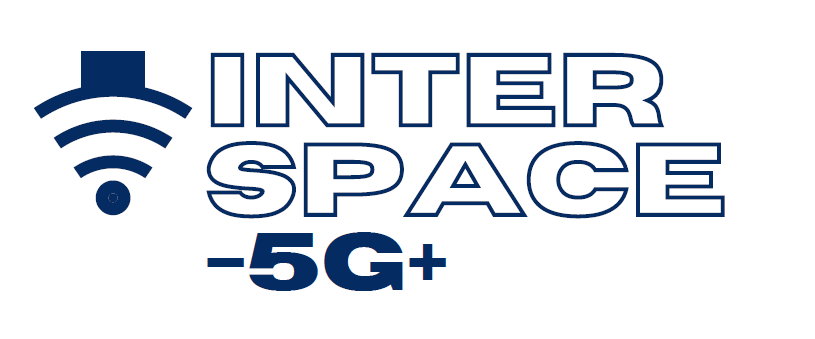R&D PROJECT
Integrated Terrestrial and Space-based Millimeter Wave Radio System for Future Communication Ecosystem beyond 5G (InTerSpaCE-5G+)

Nowadays, a significant transformation of communication systems is on-going. This revolution is taking place in both terrestrial and nonterrestrial/space systems and affects radio technologies in different areas. There is a huge interest in the definition of new space-based communication systems. Moreover, 3GPP considers Non-Terrestrial Networks based on HAPS and satellites as an essential part of 5G networks.
The objective of this project Integrated Terrestrial and Space-based Millimeter Wave Radio System for Future Communication Ecosystem beyond 5G is to generate knowledge for the development of “5G and beyond” communications systems in both the terrestrial and space sectors of future communications systems.
We will implement use cases involving the complementary enabling technologies developed in InTerSpaCE-5G+: antennas, arrays, passive devices, radio channel and materials, service management and optimization. Disruptive architecture concepts will be analyzed for application to high-capacity and high-frequency satellite communications, including links between satellites. Enabling technologies for massive LEO architectures will be proposed, as well as the integration of space and terrestrial systems within the framework of 5G networks, considering the characteristics of geostationary systems and constellations of medium and low orbit within the Non-Terrestrial Networks systems defined by the 3GPP. We will design and fabricate of agile radio wideband channel sounders to perform measurement and characterization of satellite and terrestrial radio environments at frequency bands: Ka, Q, V and W band.
Also, a space-channel-model characterization in 3D to model the angular variations of the channel features when using multibeam/beamforming and MIMO antennas will be achieved. We will also address the design of stepped-impedance filters with advanced frequency response in rectangular waveguide as well as filters and passive components in contactless technologies for enhanced performance at millimeter-waves and above. The design of new antenna technologies as well as architectures to be used in future communication systems with high demanding capacity and bandwidth requirements will be developed. New antennas with electronic beam reconfigurability, with special emphasis on reconfigurability based on liquid crystal, graphene and antenna subarrays, radiofrequency subsystems technologies and array processing algorithms will be developed. Prototypes and demonstrators will be developed and validated through measurements in the consortium’s measurement systems. Optimization algorithms that are specially devised for the optimization problems that will fall into three main categories will be developed: optimal dimensioning and design of RF devices to both maximize its performance and its robustness under possible manufacturing tolerances, optimally selecting the measurements that better model a radio channel, and optimal resource allocation in multibeam satellite constellations for satisfying variable demands. Finally, we demonstrate the application of these radio technologies by developing, manufacturing and measuring technological protoypes and demonstration systems in real scenarios.
The four subprojects, which cover interdisciplinary and complementary aspects, will work in a coordinated way to integrate the technologies developed in real prototypes that will be manufactured with the methodologies and materials to be studied in the project.
The following figure illustrates the working plan and the relation between the seven work packages (WP) in which the project has been structured. Subprojects 1, 2, 3 and 4 participate in all the workpackages since they define the use cases of the developed technologies and integrate the developments of prototype demonstrator. WP1 has been defined for coordination, dissemination activities and technology transfer to the productive sector.

FUNDING
The coordinated project PID2020-112545RB is funded by Ministerio de Ciencia e Innovación from 01/01/2021 until 31/12/2024.

